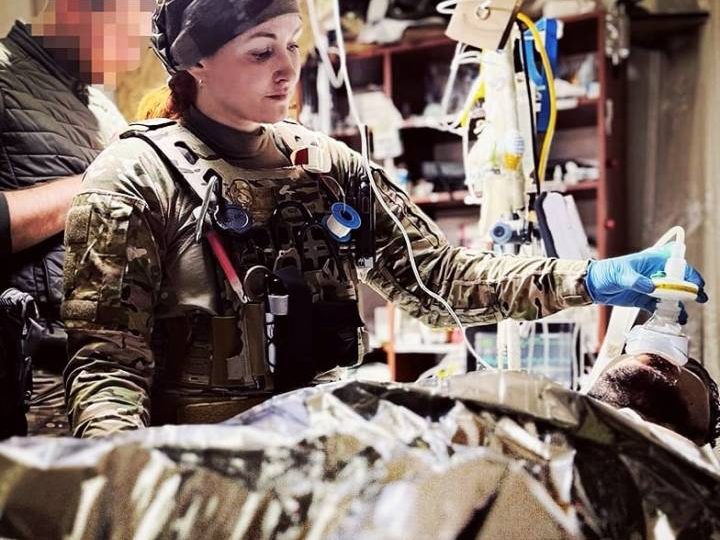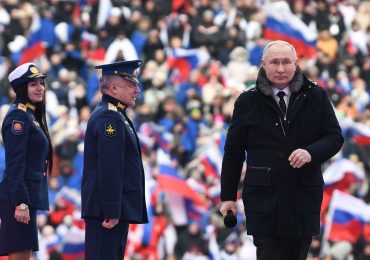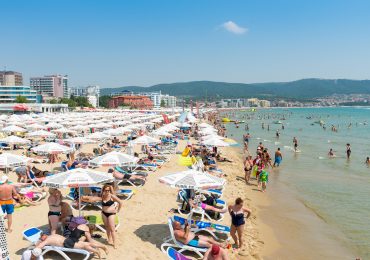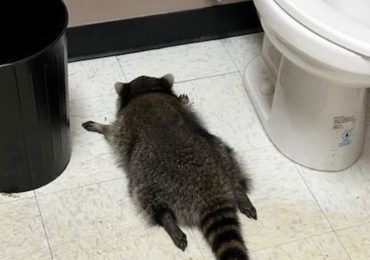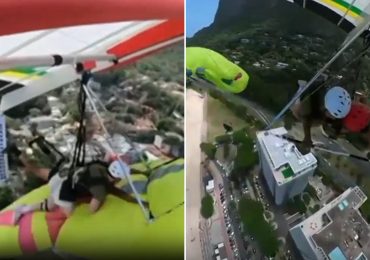UNDER a barrage of missiles and artillery fire, an exhausted combat medic drags wounded troops caked in shrapnel into a truck. Some are dead when she gets to them, others are crying.
Katarzyna Daniszewska from Warsaw, Poland, has spent two years in what she calls the “fire zone” – dodging death to save the lives of wounded soldiers while being targeted by Russia.
AwangardaKatarzyna Daniszewska – pictured at work near the frontline – is commander and founder of Awangarda (Avante-Garde in English)[/caption]
AwangardaHer brave, specialised unit of volunteer medics rescue wounded soldiers and trapped civilians from Russian fire[/caption]
AwangardaAwangarda has worked tirelessly at the front for 26 months – saving ‘thousands’[/caption]
AwangardaThe team often operates at the dead of night, crossing bomb-blitzed terrain to get injured troops to frontline hospitals[/caption]
Katarzyna, 37, is the commander of “Awangarda” – a highly-skilled, battle-hardened crew of over 25 volunteer medics operating in the blood-drenched Donbas region, eastern Ukraine.
They are based frighteningly close to the enemy not in the “zero zone, but the fire zone” – a second frontline where “we are being shot at and targeted a lot of the time,” she said.
Since the start of the full-scale invasion, her unit has worked tirelessly to provide a lifeline for smaller Ukrainian battalions that are struggling with the butcher’s bill.
“We joined those that couldn’t handle the evacuation and medical support they needed we joined,” Katarzyna told The Sun.
Her carefully selected crack team – mostly made up of Polish doctors and paramedics, but a few Brits might soon join their ranks – has now saved “thousands” of people.
“We don’t know how many exactly we’ve saved, we stopped counting after a year, we don’t care about numbers, because every person for us is a face. It’s a human being whose life we saved.”
For over two years, they’ve been embedded inside Ukrainian units on a constant rotation – crossing bomb-blitzed terrain as they desperately try to keep soldiers alive long enough to make it to a frontline hospital.
“We pushed our way into those units, gave them ourselves and they know that they can trust us fully, and we can trust them,” she said.
“Often we did something that we didn’t want to do, but we did it for them.”
TARGETED
With the amount of medics killed already, Ukraine no longer tends to risk having them in the trenches.
Instead, basic first-aid is performed by the medevacs – who Katarzyna said is made up of “any person or soldier using any kind of vehicle, transport”.
Once the wounded are pulled out of battle to a stabilisation point, that’s when Awangarda (Avante-Garde in English) steps in.
Footage onboard their evacuations shows the team scrambling to perform surgeries with head torches, driving ambulances through snowstorms, and
Katarzyna said: “It’s not as bad as being in the trenches, but it’s also very dangerous, and unfortunately we are being shot at and targeted a lot of the time.”
AwangardaThe combat medics have been repeatedly targeted by Russian forces and suffered multiple injuries[/caption]
AwangardaKatarzyna pictured with her team who are ‘exhausted’ after over two years of war[/caption]
AwangardaThe team travel hundreds of miles with badly injured troops trying to keep them alive to reach a hospital[/caption]
APAwangarda operate in the ‘fire zone’ – a second frontline – where Russian artillery and missiles could early hit them[/caption]
Her team no longer marks their vehicles with red crosses or wear identifiable medic uniforms as “it would probably just kill us faster”.
“I’ve seen that from the beginning but it’s definitely increasing,” she explained.
Katarzyna said her team had suffered no fatalities, but had suffered plenty of wounds and near-misses.
In May last year, Awangarda’s base not far from Bakhmut was targeted and blown up by two lethal Iranian-supplied Shahed drones. Her team was not inside at the time.
The Russians just keep on targeting and shooting all the time.
Katarzyna Daniszewska
“We were very lucky, but our medical friends from another Ukrainian unit were not so lucky,” she said.
“Five of our friends died and two of them were sleeping in our beds.”
As of February this year, as the war dragged into its third year, more than 170 medics had been killed by Russian weapons as they tried to save lives, according to the World Health Organisation.
Ukrainian hospitals, health centres and ambulances had been targeted over 1208 times.
Katarzyna noted how Putin’s deliberate attacks on frontline medics directly lead to the deaths of more soldiers.
In conflict, she explained most avoidable deaths take place in the transfer between the trenches and the stabilisation point.
But in this war, Katarzyna said the casualties are far higher at this stage because “it’s often not able to evacuate anyone. The Russians just keep on targeting and shooting all the time.”
Rather than hours, it can take days. “Sometimes wounded soldiers wait with just tourniquets on missing limbs with no pain relief for up to three days before we can get to them.”
Other times, the soldiers are dead when they get to them.
The types of wounds inflicted by 21st century trench warfare are also particularly devastating.
Awangarda’s medical field knowledge and tactics are largely based on conflict in Afghanistan and Iraq where it was “mostly shot wounds”.
However, Katarzyna said “the wounds in Ukraine are much worse, loads and loads of shrapnel which is difficult to treat and also loads of bleeding.”
This means many troops bleed out as they wait for medevacs that are held up trying to dodge Russian missiles and artillery hurtling straights towards their vehicles.
APAwangarda mostly operates near to the hellscape of Bakhmut – an eastern Ukrainian city that has been smashed to pieces in a never-ending meat-grinder battle[/caption]
AwangardaShe recalled how their evacuees often break down in tears when they reach a hospital[/caption]
INSIDE BAKHMUT
During the apocalyptic battle of Bakhmut, Katarzyna said her team had to make the decision whether they were prepared to operate actually inside the hellzone city as it was being torn apart.
In the end the fighting was so fierce they were completely overloaded with casualties further back “where we were being targeted, but a bit less fortunately”.
All the hideous stories you hear about Bakhmut were completely true, she said. “It was hell”.
The wounded troops’ shell shock was so extreme that Awangarda had to adapt their drug and dosage quantities.
The unit usually uses the anaesthetic ketamine but the soldiers “were so triggered” after seeing so much horror that “they had really bad trips,” Katarazyna explained.
The team were forced to up dosages and add extra sedatives to finally give them pain relief. “They were all struggling less with the flashbacks and reliving all the things they had seen”.
AwangardaMembers of Awangarda help move a bloodied soldier to safety[/caption]
AwangardaThe burnt remains of one of their vehicles after it was hit by Russian fire[/caption]
AwangardaKatarzyna sad most of avoidable deaths happen when troops are waiting to be evacuated from the trenches[/caption]
AwangardaKatarzyna (pictured right) in her full combat gear[/caption]
‘I DON’T KNOW HOW WE GO ON’
Katarzyna said the hardest part of the job is trying to keep your head straight.
“The biggest difficulty is not the massive bleeding, the lack of limbs or bodies covered in shrapnel, blood, dirt, everything… it’s the emotions of it all as we’re all people.
“We cannot pretend we don’t feel anything.”
Her eyes springing with tears, she added: “Even if you cut it out it comes back later and usually stronger..”
She described how the hardest part is saying goodbye to those they rescue, even if their meeting has been short.
“When we are giving away the casualties at the hospital, we are already crying,” she said.
“A huge bloke will break down and cry like a baby… or they will kneel down in front of the hospital and pray and take our hands and thank us.”
When asked what keeps her going after 26 months of war, she shook her head and answered: “I don’t know anymore.
“When I was answering this question one year ago, I had so much to say about it and now I have to admit I’m exhausted.
“I still try to remember that we are the lucky ones, because we are not actually fighting there constantly for our country. We can go back home to a country that’s safe and we can rest in our bed.
“But apart from that, we are also very tired – we have crossed the lines we had for ourselves at the start. So, I don’t know anymore. I thought I would give up and resign many months ago.”
But amongst all the blood, horror, and death, Katarzyna said there are short moments of hope.
She told of the moment they rescued a seriously injured soldier who recognised their team immediately and told them they had saved his son’s life earlier in the war.
Smiling, she said: “So he knew he was in good hands.”
Or the time Awangarda’s truck broke down in a storm and the man working at a garage late at night was a recovering troop they had evacuated. “He fixed it right away and for free.”
“So we keep on going and we continue the missions because we’re guided by the memories we have of seeing how much they all still need help.”
AwangardaThe experienced, battle-hardened medics at work[/caption]
AwangardaTheir makeshift ambulance crossing over scarred ground in a snowstorm[/caption]
AwangardaKatarzyna smiles as she talks to a soldier[/caption]
AwangardaOther members of the fearless rescue team of medics[/caption]
AwangardaFixing their medical truck themselves after it broke down – they no longer mark their vehicles over fears of being targeted[/caption]
AwangardaKatarzyna said the wounds in Ukraine differ from past conflicts because of the amount of shrapnel which is ‘very difficult’ to deal with[/caption]
AwangardaThe burnt wreckage of Awagarda’s base where they slept after a Russian drone attack[/caption]
AwangardaThe team sleeps wherever they can whenever they can[/caption]
AwangardaOnboard a rescue mission at an unknown position close to Bakhmut[/caption]
Leave a comment
